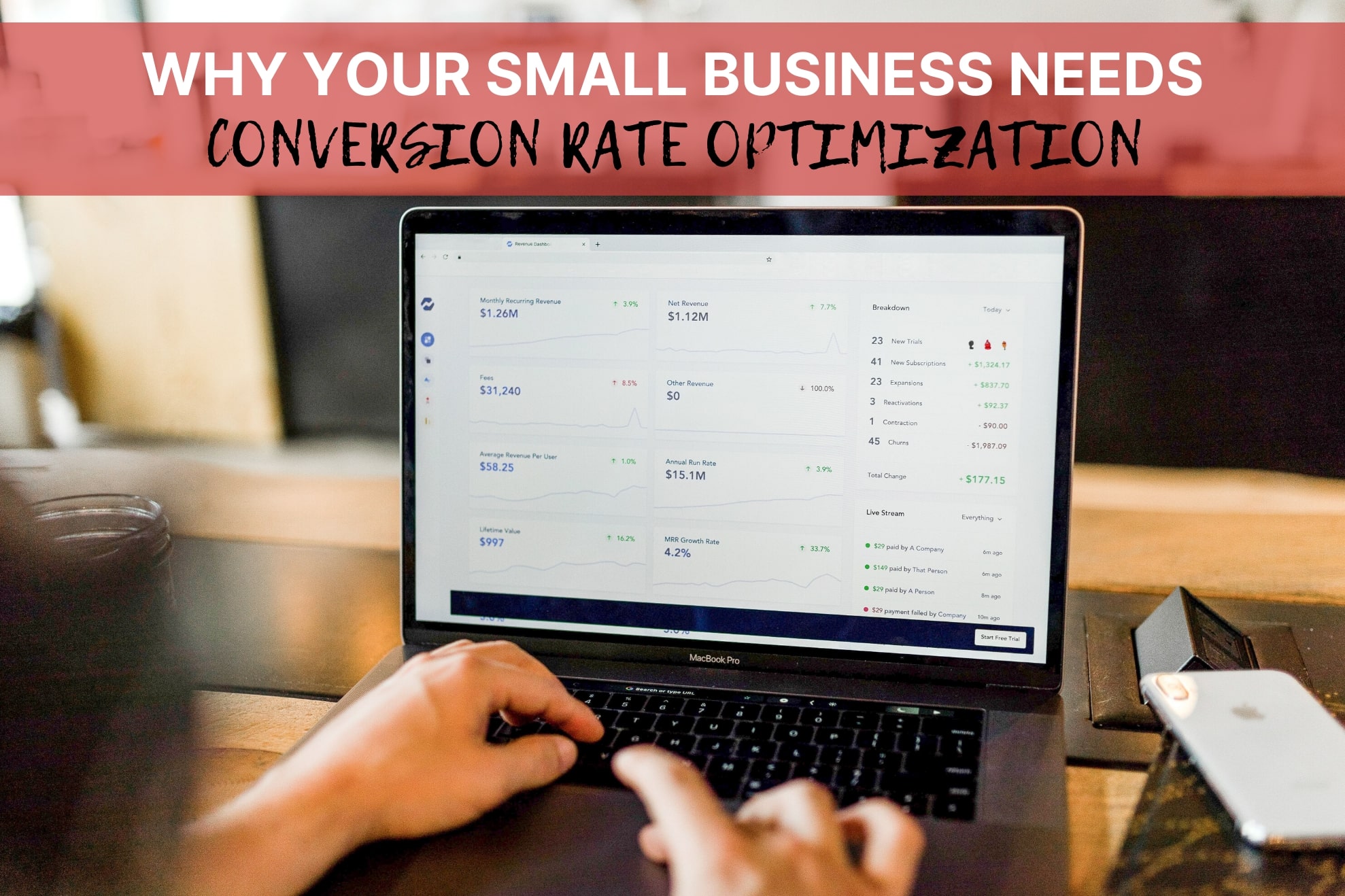Why Does Your Small Business Need CRO?

Regardless of the size of your business, in order for it to be a success, every customer must matter and each spent dollar on acquiring them should count. This is precisely why having effective marketing campaigns and strategies is especially relevant if your business is petite and striving to grow. At times, it even seems insane how much money and effort companies often drain on just alluring visitors to websites as opposed to keeping them and converting them into customers. After all, the main goals here are to convert your prospects into buyers, make the sell, and multiply your revenues.
On this page, we’ll introduce you to the reasons why conversion rate optimization shouldn’t be overlooked, explain how small businesses can benefit from it, as well as give a couple of pointers on what the process is made up of.
Reasons Why Not to Overlook CRO
Conversion rate optimization is a digital marketing strategy that’s sadly ignored one too often by small businesses.
The thing is that just getting the attention of potential buyers and leading them to your website isn’t enough. Moreover, this is the part of the deal that generally consumes most of the budget since SEO, PPC advertising, running social media channels, email marketing campaigns, and other marketing tactics come at a price. This is exactly why you should be asking yourself the following questions:
- What’s the point of leading people to your online store or site if they don’t take the action that you want them to (for instance, make a purchase)?
- For which purpose are you generating and growing the traffic of your website if it isn’t converting into income?
- So why continue wasting money on acquiring customers who leave your website without converting (or making the purchase)?
That said, if your marketing doesn’t bring you back the money you’ve invested in it, then your marketing isn’t effective. But to be fair, not only marketing matters for CRO, other factors like well laid out UX/UI and an optimally performing website are no less vital. In the cases of eCommerce websites, conducting Magento performance optimization or the optimization of any other platform that the online retail store was built on from the technical and design sides could definitely do good to conversion rate improvement.
Any small business should focus more on keeping the customers who they’ve managed to acquire. The same applies to avoiding one-time sales. Remember, customer retention increases your profit, in the same way, the goal of CRO is to gain the most you can from your client database without its expansion. Thus, CRO campaigns are needed for:
- obtaining leads of higher quality,
- learning more about the preferences and behavior of your customers,
- finding out which tactics work best,
- enhancing and optimizing your site and its performance,
- and for therefore enlarging your revenues.
5 Steps to Enhancing Your CRO
Now that we’ve shed light upon why conversion rate optimization matters (particularly for small businesses too), let’s take a look at what the process is ordinarily made up of.
Step 1: Do Your Research
The first step of conversion rate optimization deals with performing an audit of what you currently have. At this point, it is crucial to understand and analyze all the numbers (your website traffic, the percentage of clients that convert and the number that leaves). Moreover, you must do your best to allocate the weak points of the website and your sales funnel. Basically, you need to find out at which point do your customers “take the exit from the purchasing highway”.
Are there elements that aren’t functioning properly? In case a button is broken, a link is off, or something is just not right, jot it down and make sure to fix it.
Furthermore, you can “spy” on how clients are browsing your site by making use of heatmaps, screen recordings, and other tools for user behavior analytics.
Step 2: Make a Hypothesis
Having completed the investigation and studied your research, you can make predictions regarding which changes could lead to better results.
For instance, if your website has slow page load times and clients close the page in their browser since they get irritated by waiting too long for something to open, then you may assume that tweaks in page speed can fix this problem and bring you more sales.
Similarly, giving an eCommerce example, if your store’s checkout is way too complex (has too many steps, fields to fill out, etc) or if it’s not flexible enough (say, you have very few payment options to select from, and your clients prefer to pay in some other way but can’t), optimizing this part of the site can lead to much better conversions. That said, cases of proper Magento checkout optimization that resulted in doubling the number of orders are very common.
Plus, you can even play around with the wording that you have on your website. For example, make an assumption about your call to action that’s placed on buttons (ex., that “Buy now” will be more clickable than “Proceed to checkout”).
Step 3: Conduct Tests (A/B, Multivariate, etc)
Testing your assumptions is another key point. You can’t be 100% sure that a specific tactic (even one that’s used by your larger competitors or other famous brands) will work for you. Thus, the only right way to find out which solutions are a fit for your company and for your customers is running tests.
One of the most common ones is A/B testing. It is applicable for checking the strength of various elements, say, on your landing page or in your ads. You can test your headings, button sizes and shapes, button texts, layouts, designs, background images, well, anything that’s used on the page. By putting together several variations and showing them to your audience 50/50 (or in some other proportion), you can learn about what works best. The criteria that’ll determine effectiveness can also be up to you, i.e., you can measure it by the number of clicks or filled out contact forms, to give a couple of examples.
Step 4: Make Changes to Your Website
When you receive the results of your tests or have a list of bugs to fix, it’s time to take action. The volume of this step and scope of work greatly depend on which “discoveries” you’ve made.
Repairing broken elements could be a start here. In some cases, you’ll need to turn to the web designers for assistance and rework your UX and UI for optimizing the general look and ease of use of the site. In others, you’ll have to reach out to your developers for making changes in the required sections of the website.
Step 5: Observe & Analyze Your Results
After you’ve implemented the changes, it’s time to wait a bit as the results usually aren’t instant. So, don’t make conclusions too soon! When some time passes, for example, a month, you can take a look at the statistics and, based on your observations, draw conclusions on whether your CRO campaign and efforts have brought fruitful results or not. If they did, keep up the good work, don’t stop at what you’ve achieved. If the results weren’t what you expected (or have lead to backsliding), this is your time to roll back to what you had initially and return to the first step.
Final Say
Conversion rate optimization can generate great results. What’s notable for small businesses, CRO is very effective in terms of costs too. Not to mention that, in the end, you could be getting larger revenues, convert more of your potential customers, understand their behavior and desires better, all helping your petite company to grow bigger and more successful.
About the Author

Alex Husar
Alex Husar, CTO at Onilab with 8+ years of experience in Magento and Salesforce. He graduated from the Czech Technical University and obtained a bachelor’s degree in Computer Software Engineering. Alex’s expertise includes both full-stack dev skills and a strong ability to provide project-critical guidance to the whole team.






